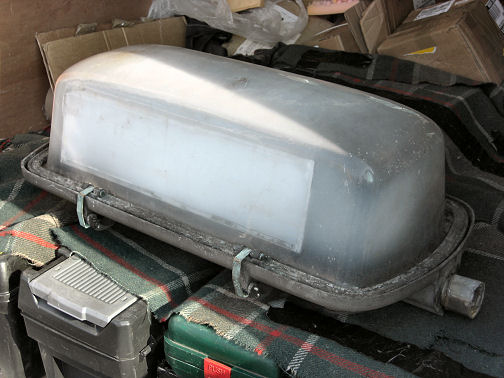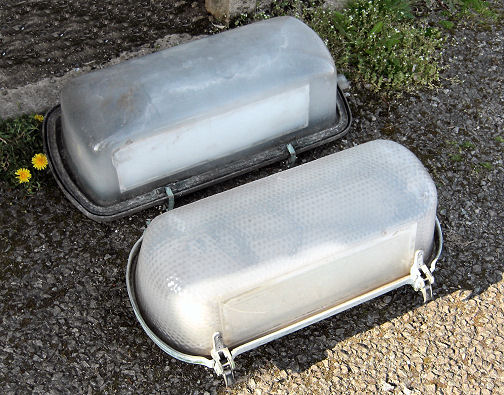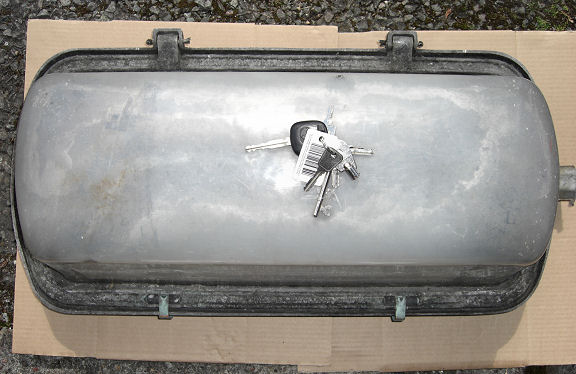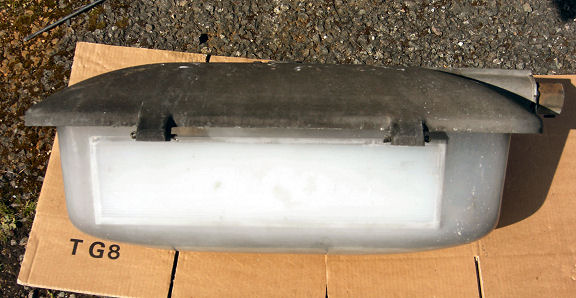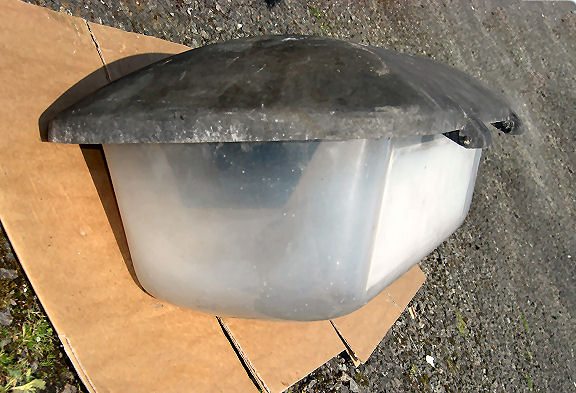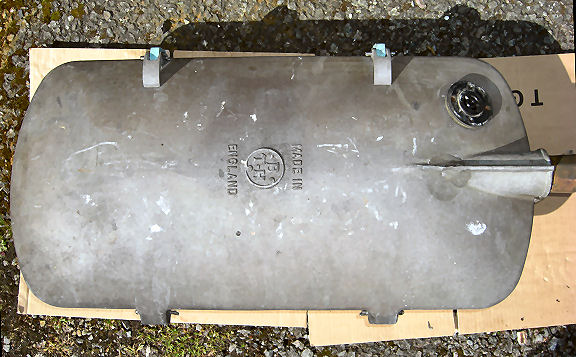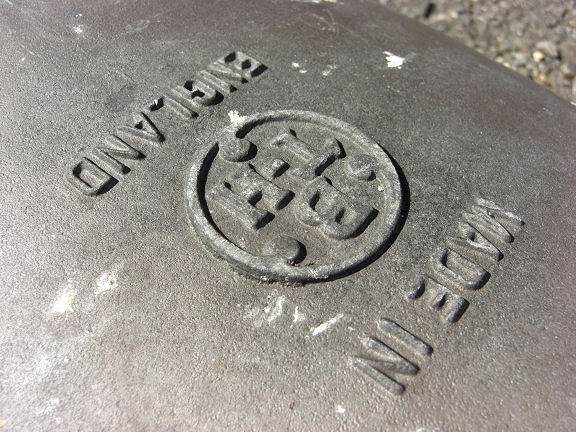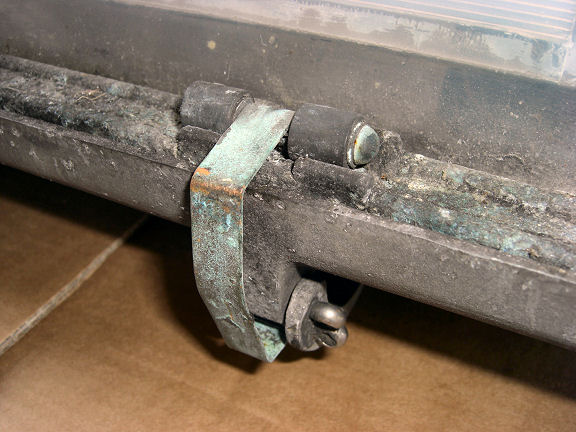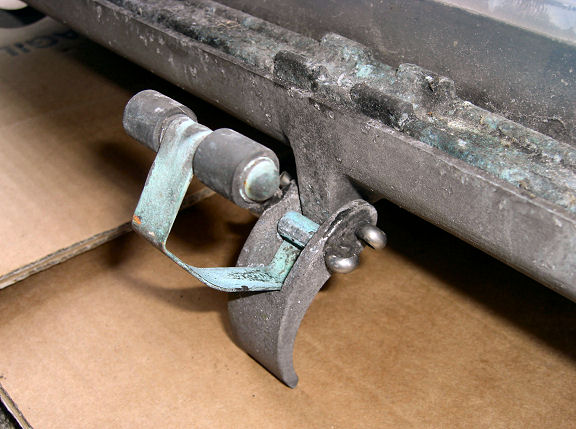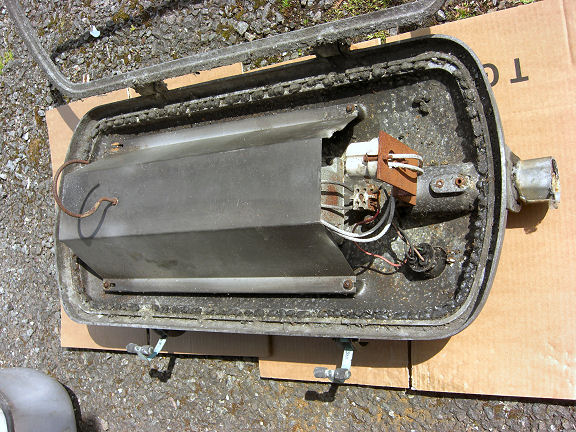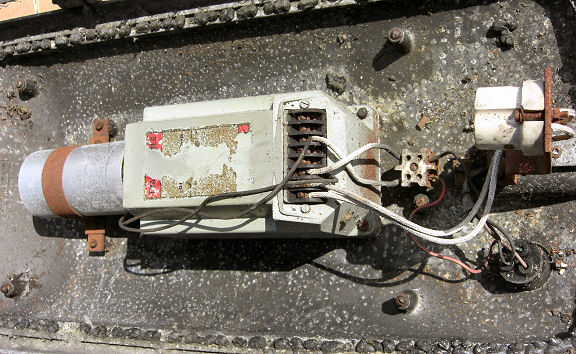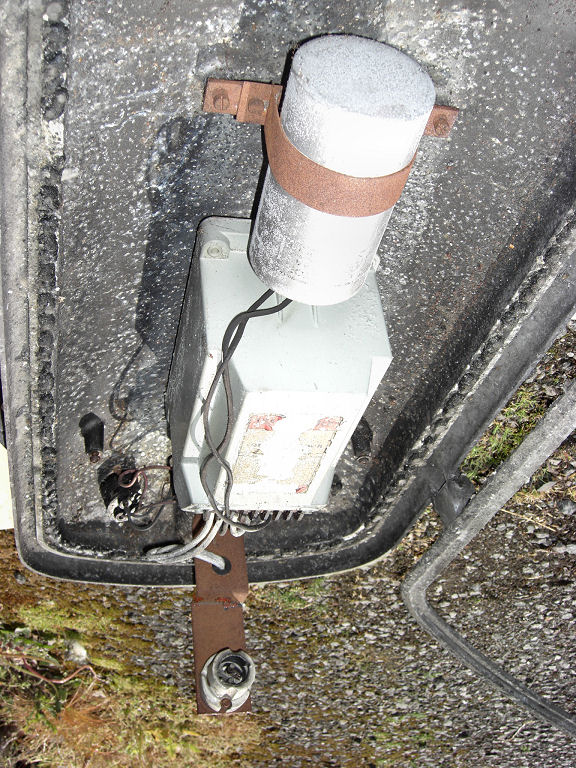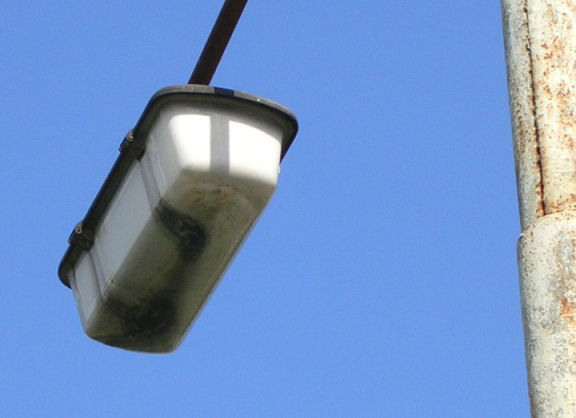|
Dating from
1956, this BTH Amber was one of a few remaining examples that until early
in 2010, lit Whitehall Road in Leeds,
near to the Copley Hill Trading Estate. BTH Ambers were favoured by Leeds City
Lighting Department, and were once commonly found throughout the City. The type
was
certainly being retro-fitted to tramway traction poles in Leeds, prior the
tramway closing in 1957. Indeed, many traction poles were retained as lampposts;
long after the trams had gone.
However, in recent decades their numbers have steadily dwindled due
to ad-hoc replacement, lighting upgrades, and through the general
regeneration and redevelopment of the City.
Fortunately,
Yorkshire based collector Steve Palmer had the foresight to make enquires
to rescue a handful of these remaining Ambers, just as some of the
very last examples were due to be taken down in late March 2010. Steve
very kindly let me have one of these Ambers in a swap for Revo 'Dalek' 140w SO lantern,
the Amber joining the collection on the 17th April 2010.
The BTH Amber, seen on its arrival in Nottingham
If you've never seen an Amber
close-up, then the first thing that you'll probably notice is the sheer size and weight of
the them. These certainly are well made fittings intended for long
service lives, and after some 54 years of continual nightly service this
particular
example is proof of that; it still works and is in amazing condition.
The BTH Amber and Revo 'Dalek' together as a comparison
There
is a single pellet hole in the plastic bowl and a slight
crack on the underside, plus the bowl's gone milky,
but the fitting is over half a century old, so I'm not
complaining. I already have a later model AEI
Amber, but that is a remote geared fitting, so it is quite lightweight in
comparison to this 'geared' BTH example. The lantern's large transformer is
encased within a heavy cast metal body; with typical BTH/Metrovick angular
styling, and this is located underneath the aluminium canopy along with
the large oil-filled capacitor.
A set of car keys to give a sense of scale. Got to be careful when lifting the reflector plate; a myriad of asbestos sheathed wiring lies beneath it, and I wouldn’t want to be disturbing that without the right protective gear and facemask.
Side view of the BTH Amber; a brute of a lantern, which something that is quite difficult to get across in 2-dimensional pictures
The Amber front-on, showing the substancial cast hinge mountings. There's something quite 'mean looking' about this design of lantern from this angle.
The Amber's broad canopy seems almost over generous for the size of the lamp it houses beneath it, although the control gear bolted to it is quite substancial.
The all important BTH symbol, which is missing from the later AEI models.
Superbly engineered, one of two bowl clamps
It folds down with the precision of an aircraft undercarriage leg, but it's just a bowl clamp!
The lantern in its opened-up position and the plastic bowl removed. This reveals the lampholder and the raised aluminium reflector that hides the 'Amber's' BTH control gear.
On loosening the four retaining screws, the reflector slides out, and this is what's underneath. The angular, cast body of the transformer is so typically BTH -Metrovick. Clamped in behind it is BTH PL28A oil-filled capacitor. The cables are sheathed in asbestos, so care is needed in handling the lantern.
Another underside view, but from the front of the lantern looking back.
A top-entry version of the BTH 'Amber' for 140w SO lamps seen in Wolverhampton on 21st August 2005. Copyright(c) 2005 Claire Pendrous. All rights reserved. Please note that all pictures are by Claire Pendrous, or are part of the Claire Pendrous photographic collection unless otherwise stated; none of these images can be copied without obtaining prior permission. |
|
|











